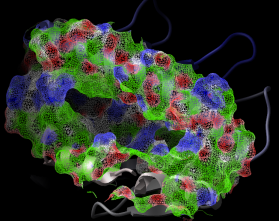
Copyright © 2025, Molsoft LLC
Dec 25 2025
Google Search:
Keyword Search:| Contents |
|---|
| Introduction |
| Reference Guide |
| Command Line User's Guide |
| References |
| Glossary |
| A |
| B |
| C |
| D |
| database |
| Depth cueing |
| distance |
| distance geometry |
| Ssbond |
| drestraint |
| drestraint type |
| E-H |
| I-N |
| O-R |
| S |
| T |
| U-Z |
| Index |
| Prev | ICM Language Reference D | Next |
[ database | Depth cueing | distance | distance geometry | Ssbond | drestraint | drestraint type ]
database |
a format for storing entries containing several different types of information. The column format (multicolumn representation) is the alternative. The database should have the following format:
FieldName1 Number|String FieldName2 Number|String FieldName3 Number|String FieldName1 Number|String FieldName2 Number|String FieldName3 Number|String ...Fields can contain integers, reals and multiline strings.
Example:
id jur1 iq 24 addr LA addr California id jur2 iq 17 addr LA
See also:
Depth-cueing, or fog |
|
a visual effect which makes objects disappear in a fog according to the screen Z-coordinate.
Press
Ctrl-D to invoke the effect and move the back clipping closer with MidMB to make the effect more dramatic. Also more the front clipping plane with Ctrl-MidMB to make the front brighter. |

|
If you use gui adjust the front and back clipping planes using the buttons in the graphics tool bar and vertical movements with the left-mouse-button
Two parameters influence the fog effect:
- fogStart determines the relative Z-position at which the linear fog effect starts (the distance between the front and the back planes is 1.)
- color volume color command allows one to color fog differently from the background (by default they are the same).
distance |
a measure of proximity in three-dimensional or multidimensional space for all kinds of objects, including sequences and real arrays. Sometimes it means a special array ( parray to be exact) consisting of batches of interatomic distances. This objects are shown in the GUI and are interactive.
See also:
- Distance () function returning real distance or distances.
- make distance to create distance lines and labels. It returns a parray object with distances.
- make hbond for hydrogen bonds created in the format fo the parray "distance" object; (see also make 3d label )
- Table(distobj distance)
distance geometry |
is often used to calculate a set of Cartesian coordinates of a series of objects given all (or even a subset of) the inter-object distances (Crippen and Havel, 1988). ICM function Disgeo() allows one to solve this sort of problems. See also Distance().
disulfide bond |
(or SS-bond) a covalent bond between sulfur atoms of two cysteine residues. In the PDB objects loaded by the read pdb command these bonds are automatically imposed on the basis of SSBOND records. Upon conversion of a PDB structure into the ICM-object with the convert command, the disulfide bonds are inherited. Important: commands make disulfide bond and delete disulfide bond are valid for ICM-type molecular objects only (and have no effect on, say, PDB structures). Both commands change the covalent structure of the modeled molecular object and expel/add hydrogens. In addition, SS-bonded cys residues are renamed to cyss. Therefore, to count the number of disulfide bonds you may simply count the cyss residues: show Nof(a_/cyss)/2 . Distance restraints imposed to form such a bond are defined in the file icm.cnt .
drestraint |
a distance restraint (sometimes abbreviated as cn ) which
imposes a penalty function on the distance between two atoms of the same object
( in contrast, tether imposes a restraint to an atom in another object ) .
Distance restraints may have different characteristics and types.
A drestraint is a basin with flat bottom between the upper and lower bounds ( Du and DL )
and quadratic walls:
| P( d ) = w*( d - Du )2 /Du | if d > Du (upper wall) |
| P( d ) = 0 | if DL < d < Du (flat bottom) |
| P( d ) = w*( d - DL )2 /DL | if d < DL (lower wall) |
drestraints are mostly used in structure determination using the NMR NOE data. The weight, w, is the product of the weight for all distance restrains ( cnWeight ) and a specific weight for a given drestraint type.
Drestraints may be read, written, made, setn, shown, and displayed. The parameters of drestraints are written in *.cn files. See also: icm.cnt drestraint type file description.
To activate the drestaint penalty term, use the set terms "cn" command.
drestraint type |
a type of distance restraint(s). It describes well depth, lower and upper boundaries and has two forms: global and local. Local restraints become weaker and vanish as the distance between the corresponding atoms grows (similar to the van der Waals forces), while global restraints become stronger as you deviate further from the required distance range. Local type has an additional characteristic such as sharpness. The types are given in *.cnt files.
The main list of types consists of general user-defined global and local types as well as a number of fixed named types used to impose disulfide bonds or peptide bonds. Drestraint types may be read, written, set, and shown.
See also: *.cn file description.
| Prev cpk | Home Up | Next E-H |